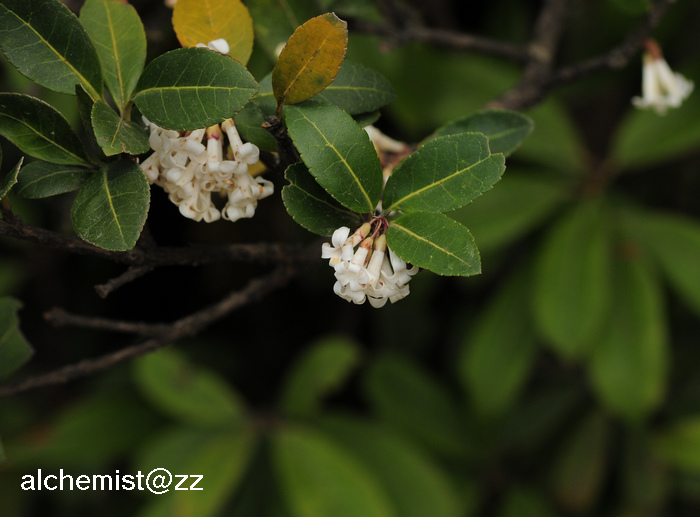- Scientific Name: Osmanthus delavayi Franch.
- Ref: Bull. Mens. Soc. Linn. Paris 1:613. 1886
- Synonyms: Ligustrum phillyrea H.Lév.; Siphonosmanthus delavayi (Franch.) Stapf
- Chinese Common Name: 山桂花 shān∙guìhuā, 管花木樨 guǎnhuā mùxī
- Family: Oleaceae
- Genus: Osmanthus
- Distribution: Montane regions, ravines, thickets, mixed woods; 2100-3400 m. Guizhou, Sichuan, Yunnan
- Photo: 04/06/2012, Mt. Cang, Yunnan
Shrubs 2(-5) m. Branchlets densely pubescent. Petiole 2-3 mm, puberulent at least when young; leaf blade oblong, broadly elliptic or broadly ovate, 1-2.5(-4) × 1-1.5(-2) cm, thick leathery, base broadly cuneate, margin with 6-8 pairs of sharp serrations ca. 1 mm, apex acute to obtuse and mucronulate; midrib raised, pubescent adaxially, especially near petiole, primary veins 4 or 5 on each side of midrib, obscure. Cymes fascicled in leaf axils or terminal, 4-8-flowered; bracts broadly ovate, acute, slightly puberulent. Pedicel 2-5 mm, glabrous or rarely slightly puberulent. Calyx 2-4 mm. Corolla white; tube 6-10 mm; lobes 4-6 mm. Stamens attached to middle of corolla tube; connective elongated into an obvious mucro. Drupe blue-black, long ovoid, 1-1.2 cm. Fl. Apr-May, fr. Sep-Oct. (Flora of China)
